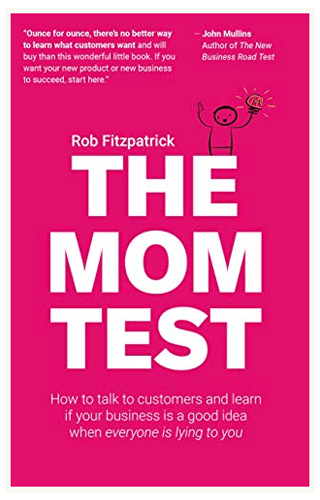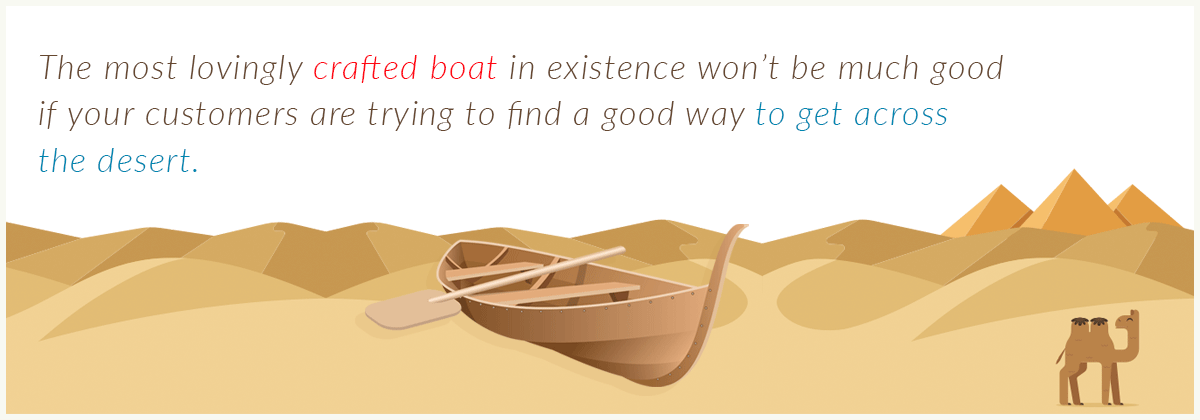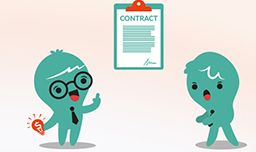How do you turn an idea into an app?
You have been thinking about this for months. You’ve talked to your people, and you know this App is going to change the world. You’re motivated, and your friends are cheering from the sidelines, but now isn’t the time to realize that all of that hype has led you blindly face planting straight into a plate of humble pie.

So, how do you prepare yourself early to avoid running into a brick wall down the road? The answer for every startup will be unique, but there are still some solid ways to keep yourself and your baby project safe and steady.
Let’s get started.
Know what to ask
 Before we get into making our product, we first need to know if it’s even going to be viable. Talk to people for initial feedback, read books on the subject matter and try to evaluate if your business is a good idea in the first place.
Before we get into making our product, we first need to know if it’s even going to be viable. Talk to people for initial feedback, read books on the subject matter and try to evaluate if your business is a good idea in the first place.
“The Mom Test” by Fitzpatrick, Rob, does a great job in nailing this crucial step perfectly. To briefly summarize:identify what problem needs solving first and foremost. You may well have been asking people for their opinions, without probing exactly what they even need a product to do.
The most lovingly crafted boat in existence won’t be much good if your customers are trying to find a good way to get across the desert.
“The measure of usefulness of an early customer conversation is whether it gives us concrete facts about our customers’ lives and world views. These facts, in turn, allow us to improve our business.”
A good product alone may not necessarily have a use. Find a Problem first, then create a way to fix it.

Do you believe in your product?
This isn’t a trick question. Seriously ask yourself if your idea is something you are ready to spend long days and sleepless nights bringing to life.
The development road is long, and often blind. Problems will happen, bugs will happen, you need to be ready to roll with the punches for a good while, and if you don’t believe in this idea, you will feel those hits keep on coming. It’s been said a million times for a reason: You are your Product.
Believe in your idea, believe in yourself, and others (Such as investors, those sound important!) will believe
in you.

Start small, start functional
Now that you know and trust your idea, it’s time to get that first marketable build ready. You may be familiar with the term MVP, or “Minimal Viable Product”. In short, once you know your idea and your market, it’s time to boil it down to a set of features that would be acceptable for launch. Quality in your core features will get those early adopters in, and those folks are going to be able to give you feedback on what works well, and may even drive some traffic to your app.
Focus on and iron out your Core Features, your full feature plan can be implemented as the app evolves.
Establish a foothold
 Now that we know our goal, we believe in it, and have a core set of features coming together, we need a platform to push off from. “But hey, my app is definitely going to secure funding to get onto 8 different platforms right from day 1, I know our scheduled release was 9 months ago, but you can’t rush quality!”
Now that we know our goal, we believe in it, and have a core set of features coming together, we need a platform to push off from. “But hey, my app is definitely going to secure funding to get onto 8 different platforms right from day 1, I know our scheduled release was 9 months ago, but you can’t rush quality!”
Going multi-platform could be a huge boon…. eventually. More likely, you will wind up fixing bugs and reworking features several times at once in completely different environments.
Keep your build open to expansion down the line, but be patient. Once your idea is actually functional one platform, then it’s time to use that foothold to expand to other markets. Until then, your resources are better spent on polishing your flagship.
What about funding?
Before we get started, there is a handy guide out there that I would recommend grabbing a copy of HERE. The author made a free version to help out those who want to get a better understanding of an Investor’s mindset.
First, your project may not even need funding. Yes, more capital is always good, but you really should try to cut overhead before expanding your actual budget or incurring any debt. If your project is one with limited costs, and looking like it will be able to start becoming profitable at or near launch, feel free to just bookmark this until it actually becomes a necessity.
 What about when you do need some financial backup? How do you impress that big scary money dragon that everyone always talks about?
What about when you do need some financial backup? How do you impress that big scary money dragon that everyone always talks about?
It’s far easier to get backers behind a proven team, that part is obvious. It’s often misunderstood, however, that an idea will “sell itself.” In fact, your ability to cope with the ups and downs of your business, as well as adjust accordingly may be their biggest factor in determining if you get the help that you may need.
Think about it this way: You need to across some stormy waters. On one hand, you have someone who got their hands on a fancy boat, but spent 30 minutes digging through a manual to find out where the keyhole is to start the dang thing. On the other hand, there’s a boat that’s clearly seen better days, but you’ve heard that it’s owner is a solid navigator, and you know they can handle themselves if need be. Who would get your money?
Try to keep your goals realistic, meet your deadlines, and you will have an easier time getting those investors when you need them.
While we’re talking about Investors, however….

Growth comes first.
Product first, Profit second
Next, we come to another scary rabbit hole, however, this is one even the big guys make with surprising regularity.
You may be thinking that the only thing investors care about is Money, right? No. Not at all. In fact, most successful investors care about long term stability first and foremost. As such, remember that focusing on only profits may actually be what scares off investors down the road. This focus generally tends to the deterioration of core features, a negative customer experience, and will ultimately just lose Brand Value in the long run.
Know when to call it quits
 Lastly, your idea needs an Expiration Date. You need to pick a concrete date as the finish line for your app. This helps to home in on making your MVP, knowing what to cut, and when. All of this will assist in avoiding the unfortunate road to development hell, and heartbreak that comes with it.
Lastly, your idea needs an Expiration Date. You need to pick a concrete date as the finish line for your app. This helps to home in on making your MVP, knowing what to cut, and when. All of this will assist in avoiding the unfortunate road to development hell, and heartbreak that comes with it.
Pick an End Date. Stick to it.
The Road ahead is complicated, unique, but rewarding.
Now that you know how to avoid many of the major pitfalls of app development, it’s time to put them into action. Ask the right questions, find your niche, make a plan, believe in it, and keep your goals realistic.

If I can offer one last piece of advice, just be cautious. No one can say when a sudden complication throws things into chaos, but mentally expecting this helps lessen its impact.
Development is unique for every project, but being pragmatic will help to keep you going steady, and eventually, profitable. If you need any help with polishing your app idea, book a free consultation today.
Good luck!








